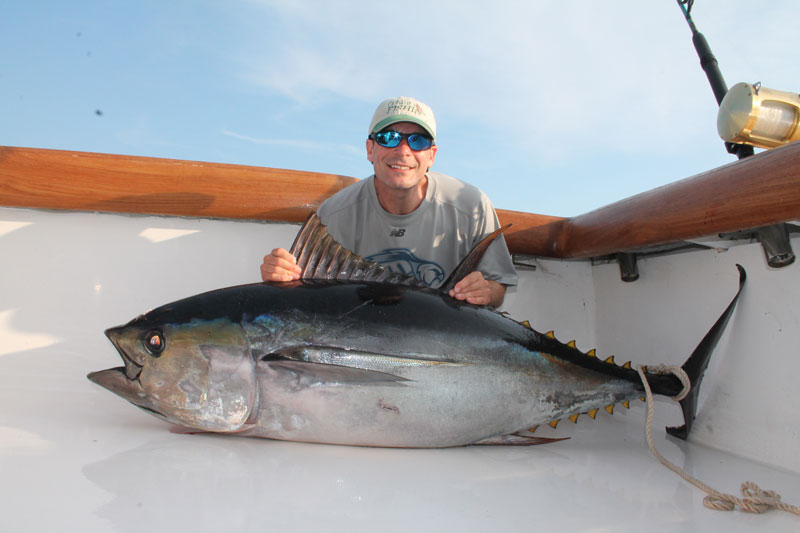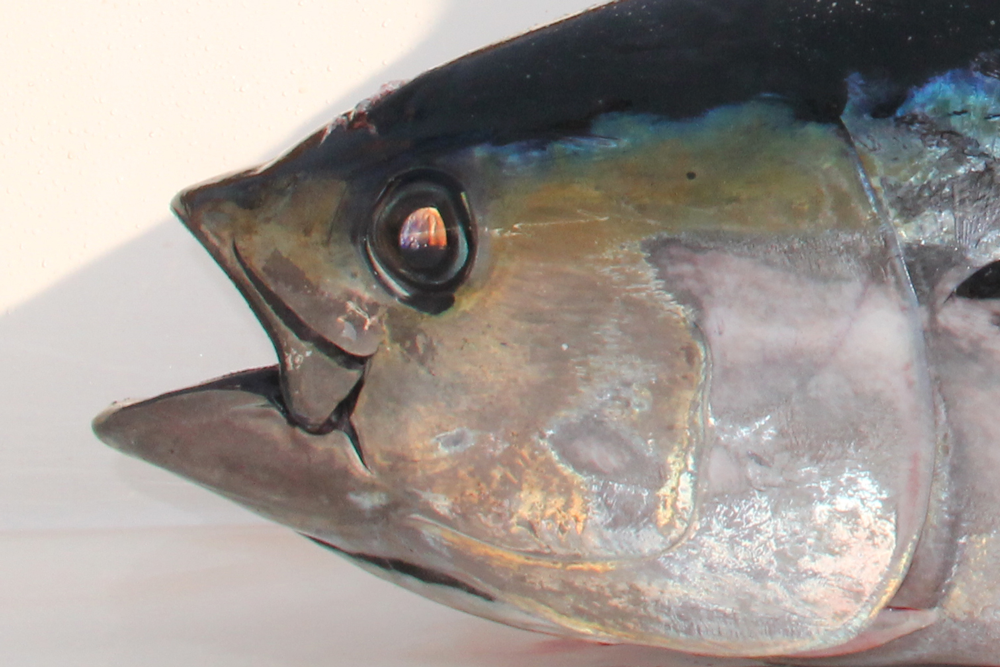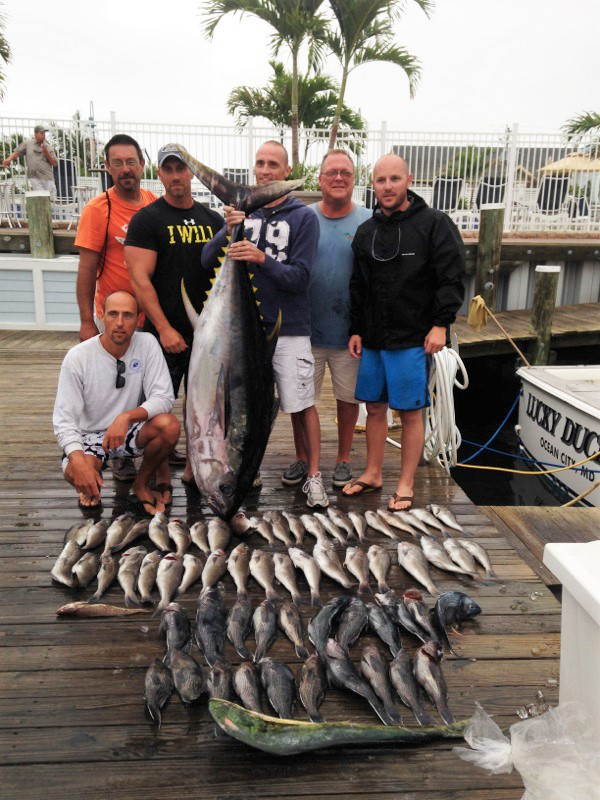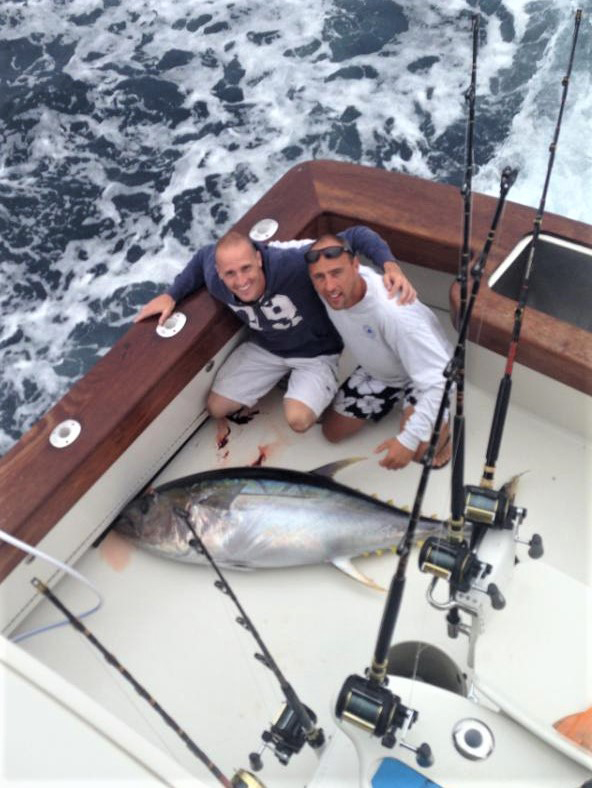If you're serious about offshore fishing and you’ve ever had a bigeye tuna inhale your bait, considering the fight that’s surely embedded into your memory, this fish’s scientific name - Thunnus Obesus - probably makes perfect sense. With tackle-busting ability and the determination to match just about anything ever hooked on the end of a line, these obese beasts are more than many anglers can handle—tag-teaming these giants is pretty much standard operating procedure. Put the 30-class tackle away and dig out the 50 and 80's.

Identifying Bigeye Tuna
If you believe bluefin and yellowfin tuna are somewhat difficult to tell apart, then it’s very likely bigeye tuna will have you scratching your head. With a body shaped like a bluefin and pectoral fins the length of a yellowfin, identification can be difficult. But there are a few ways that an untrained eye can tell the difference. First and foremost are the eyes. The pupil of a bigeye is almost two times the diameter of the other two species, thus its name and the easiest way to determine what species of tuna is threshing around in the cockpit. Next examine the fins. The pectoral fins on a bigeye are almost identical in length to those of the yellowfin, extending to the beginning of the second dorsal fin. The pectoral fin on a bluefin falls well short of the second dorsal. Since this fin really does not distinguish the bigeye from large yellowfin, then take a look at the anal fin. This fin is shorter on bigeye than on mature yellowfin, which tend to be long. Still unsure? Examine the body. More often than not, the body will contain lateral iridescent blue bands on the side, which both bluefin and yellowfin lack. This characteristic must be checked as soon as the fish comes out of the water, however, since the lines fade quickly once the fish is boated. If there’s still a question as to the identity of a tuna lying on the floor of the cockpit, the location it was caught may be the final identifier. Bigeye are seldom caught inside the 100 fathom line. This member the tuna family likes a lot of water beneath its keel as it searches out dinner.

Before getting your hopes up, everyone should understand that there’s nothing easy about catching these fish. Many anglers go for seasons on end without hooking one up, and once you do get a bigeye on the line, there’s no guarantee you’ll get it to the boat. But they regularly make strong appearances in the Mid-Atlantic canyons, so crews adjust their trolling spreads to be appetizing to this brute. (Keep your eyes on our Coastal Fishing Reports to keep tabs on when the bigeye bite is good). Speaking of appetizing: the flesh of bigeye contains a high concentration of fat, giving it a different flavor then other tuna species. Some anglers like it, while others find it less appealing than yellowfin or bluefin. Nonetheless, the excitement surrounding the catch of a bigeye more than overshadows the differences in taste.
The bigeye’s biology also comes into play as you choose when to target this species, because these fish’s eyesight is sensitive to direct sunlight. This results in most bites developing early in the morning or late in the evening, when sun is low on the horizon. Some boats focused on catching bigeye leave the dock at noon, fish through the sunset, and return home long after the sun has gone down. Some anglers have also had success trolling at night.

Bigeye Tuna Tactics
One of the best methods for drawing bigeye to the surface is to use spreader bars along with large teasers. Like many species, they are attracted to disturbances on the water's surface, especially near the transom of the boat. Due to this fact, when targeting big eyes run a tighter spread. Spreader bars off of the short riggers along with one pulled as a center flat line is just the trick for raising this tuna.
Of course, they are susceptible to rigged baits too, the bigger the better. The average bigeye tipping the scale at 100 or more pounds does not mind eating a large meal. Skirt large and horse ballyhoo with an Ilander; the blue/white color pattern is popular. Rigged mullet and squid is appetizing to bigeye as well, and all of these offerings can be positioned around the spreader bars to fill out the spread.
Finding the Bigeye
Crisscross the canyons dragging your baits in 200 to 500 fathoms. If you want to catch yellowfin troll up the canyon walls into 50 to 100 fathoms, but remember, Thunnus Obesus will seldom be found in waters that shallow. As you troll always keep an eye out for pilot whales, which are often found in close proximity with bigeye, and focus your efforts where you see them. Some anglers believe that the bigeye and pilot whales are feeding on the same squid down deep below and this is why they’re often seen together. Whatever the reason, stick with those whales, they’re your best visual indication that bigeye are near-by.

When you do get hit there is usually no mistaking a bigeye bite. Unlike other members of the tuna family which often come up underneath the bait and snatch it, averaging 100 to 200 pounds, these fish leave a huge hole in the ocean when they explode on the bait. On top of that, they often travel in small packs and multiples hook-ups are common, resulting in two or three rods doubling over, leaving anglers with their mouths open and their hands full. This results is total chaos in the pit—which after all, is one of the reasons we anglers fish!
-By John Unkart, author of Offshore Pursuit and Saltwater Tales. You can find books by John Unkart on Amazon.
Editor's note: This article was originally published in September of 2017 and was last updated in May of 2024.